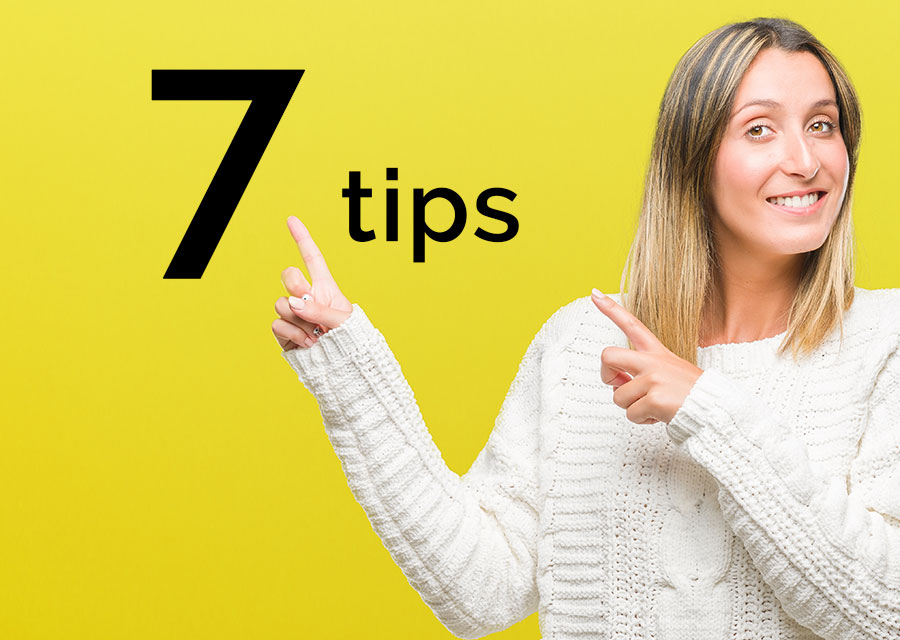How to Build Inbound Links to Your Website: 8 Tips for Inbound Link Building
Maybe you run a company and you want your marketing team to drive inbound marketing but you’re not sure how to do it.
Maybe you’re in marketing or sales and you want to show your boss the importance of building out your website because, you know, it’s time…
Whatever your reasoning, we’re glad you’re here—it’s time to talk about link building and backlinking.
Table of Contents
- What Makes These Inbound Links So Important?
- 1. Focus on Your Blogging Efforts
- 2. Free Stuff! Create Free Tools, Shareables, Visual Content, and More
- 3. Do Something Funny
- 4. Host Free Webinars and Make the Content Available on Your Website
- 5. Write Case Studies About Your Most Impressive Clients
- 6. Make Your Content More Shareable
- 7. Have a Separate Page for Each Location You Serve and Link to Local Partners
- 8. Stop the Presses
- Next Steps
So, what’s the deal with link building? Link building is a strategy that’s used to improve your visibility on a search engine—your search engine optimization (SEO).
Link building is the practice of building one-way hyperlinks to your website, all to boost your SEO. These one-way hyperlinks are called backlinks, and they’re a solid way to improve your Google SEO ranking. Common link building strategies include things like content marketing, offering useful tools, email outreach to other site owners, broken link building, and public relations. What kinds of things can help your website rank higher?
The number of backlinks you use
- How the links are used
- Which publisher links to your page
What Makes These Inbound Links So Important?
To grasp the practice of link building, we’ll need to hop in a time machine and journey back to the days before search engines, like Google, reigned supreme.
Before Google, search engines like Yahoo! and Alta Vista had a little more share of the market than they do today. They ranked their search results based solely on the content on the page. That is until Google showed up and changed the search engine rankings game forever.
Thanks to Google’s algorithm, pages are ranked not just by their content, but also at how many people have linked to the page, and later, also by the quality of the links. As it turns out, this ended up being a pretty useful tactic. It’s a stellar way to determine the quality of a page, which is why Google uses backlinks to identify which pages will be the best answer to your search query.
And herein lies the crux of our quest today: Determining how to get high-quality backlinks. Here’s what you should know about how to get inbound links to your website.
1. Focus on Your Blogging Efforts
It’s not uncommon for your blog to be the first experience your potential clients and customers have with your brand. This is why we recommend building and maintaining a thriving blog. As HubSpot puts it, “Consistently creating great blog content that people naturally want to link to is one of the most tried and true ways to organically generate inbound links.”
But great content and great blogs that exist on their own in a vacuum won’t do much for your brand; you need inbound link building.
How do you do this? One way is to link to other blogs on your blog. After all, the original intention of blogging was to be a social tool. When you regularly link to other blogs, it’s more likely that these bloggers will also return the favour and you get new inbound links to your website.
Another way to improve your blogging efforts and focus on link building is guest blogging.
Perhaps you’re a great writer. But if not, you’ve probably got someone on your team who can write a guest post for you. Writing a really spectacular guest blog, then shopping it around to other blogs is a great way to get your website noticed.
So, what are the benefits of guest blogging?
- Immediate exposure to your target audiences
- Grow your personal network
- Improve your social media shares
- Bolster your social media following
- Improve your domain authority
- Build backlinks that drive traffic
2. Free Stuff! Create Free Tools, Shareables, Visual Content, and More
We all love it when things are free, right? Your future customers are no exception.
When you offer free tools, shareables, and more, you’re not only letting your leads explore who you are as a company and building links, but you’re also building value in your brand
You can even curate and publish resource pages for your blog like HubSpot did here, which can link to all kinds of resources you have on your website in one piece of content. This will boost the number of quality backlinks you have and provide an invaluable service for your clients as well. Think of this as a strategy.
Many of the services and shareables you have on your resource pages will be topics your future customers need, linked all in one place. From an algorithm standpoint, it’s a Google search goldmine.
What kinds of free resources should you offer?
- A plug-in or application that offers a service, like this email subject line analyzer. Make sure it’s something that exemplifies what you do as a company.
- Shareable templates that will make your clients’ jobs easier; that they can use and link to over and over again. If you’re a designer, for example, you could create and share a template for business cards. These kinds of freebies are a great way to get a ton of quality backlinks.
- A compelling infographic. 90 percent of information transmitted to and processed by the brain is visual. Infographics are memorable, and people love to share them, dramatically increasing your chances at an inbound link. You can create high-quality infographics here.
- Slideshare presentations that present meaningful information in an eye-catching way. These are easy to link to, easy to share, and will get you noticed while providing relevant value. You also present yourself as a leader in your industry and build top-of-mind awareness.
3. Do Something Funny
We all remember the Old Spice Guy, right? Or Jake from State Farm? Or the Dollar Shave Club ad?
We’ve all shared and received funny videos online, or posted them on social media, or commented on someone else’s post.
These are all examples of backlink building. While Jake and the Old Spice Guy got their start on television, they became viral thanks to the internet. You don’t necessarily have to produce a video or commercial to earn links, just a timely meme.
In fact, meme marketing has even been referred to as “the future of social media marketing.” Creating a meme and sharing it online, or including it with your latest blog post are easy, effective ways to build backlinking and drive inbound traffic.
Even building a witty blog post that’s funny or more enjoyable to read than your average, dry business blog means you’re content is more shareable and people will link to your page and bring you more visitors.
This idea might sound simple compared to more sophisticated marketing strategies out there, but it’s taking off for a very particular reason: It works!
4. Host Free Webinars and Make the Content Available on Your Website
If you play your cards right, when you create and host a free webinar you can end up with lots of new content for inbound link building. Webinars are a great way to support both your SEO strategy and your link building efforts.
One webinar that is jam-packed with all kinds of high-quality content opportunities can help your Google algorithm ranking. Not only are you providing an exceptional educational opportunity for your clients and leads, but you can repurpose this information in all kinds of ways, including:
- Upload short clips (3-5 minutes) from your webinar to your own YouTube channel, using carefully-curated keywords in the description. You can even break each Q&A segment into its own video to upload and share!
- Share the transcript of your webinar. You should have enough content to share in several blog posts. Just one, 1-hour webinar can have as many as 7,000 to 10,000 words. Since Google is beginning to favour longer content—1,200-1,500 words or more—you can get as many as eight linkable, shareable new blog posts for link building purposes.
- After your webinar, you have a great opportunity to gather feedback via a survey from your attendees. Some of the information within your feedback can also serve as reviews and testimonials—which Google values highly in their SEO ranking.
- Turn your webinar’s PowerPoint into a SlideShare presentation and backlink it to your website.
5. Write Case Studies About Your Most Impressive Clients
If you have a spectacular case study about how your company turned things around for one of your clients, you have a fantastic opportunity for inbound link building.
When you make your clients look great in your case study of your work with them, there’s no question that they will link to your case study. The key here? You have to make them look good. You’ll want to select companies that have experienced great results, know your products and services well, and are excited about their collaboration with you.
Need help building a case study that will get you noticed? HubSpot has a comprehensive, easy-to-use case study template to get you started.
Conversely, volunteering to be in a case study will also help create links to your website and pique the interest of potential clients.

6. Make Your Content More Shareable
If you want people to share your content on social media, you should make it easier for them to share it, right on your page. One way to get inbound links is to include “Tweet This” or “Click to Tweet” links for all the notable quotes in your content. This will encourage your readers to share your content more often. This accomplishes a few things all at once:
- Improved SEO rankings
- Better visibility in social media news feeds
- More attention from more people on Twitter streams
One easy way to make this happen is with ClickToTweet links, which are fast and simple to use.
What else can help you get your message shared across social media? Install social sharing widgets and buttons, and implement them everywhere: case studies, whitepapers, eBooks, and blog posts.
7. Have a Separate Page for Each Location You Serve and Link to Local Partners
Too many web pages are designed to cover information for every location on one page, which isn’t an ideal solution if you’re looking to build backlinks and internal links.
Generally, every page of your website should only cover one idea. Why? Dedicated pages rank higher in Google’s SEO algorithm, so don’t be afraid to add individual pages for each service you offer and every location you serve. Next, link to local partners to encourage mutual link building.
What do you need to know about location pages?
- Keep the content unique on each page and add plenty of anchor text
- Have a structured set of URLs that are easy to understand and specific to each page and location. It’s easier for Google to index your site this way.
- Add distinct, different images and meta-descriptions to each page to optimize your SEO
- Share your mentions on press releases, guest blogs, and posts on authority sites to help boost backlinking
8. Stop the Presses
Press releases can actually be an inbound marketing strategy too. When you do something newsworthy, capitalize on your momentum by using it for inbound marketing. Build top-of-mind awareness and establish yourself as a newsmaker among your target audience by sending out press releases.
Press releases can be posted on your own website, but you can also share them with area newswires to get more attention from your target audiences. And when you collaborate with another company? It’s your chance to send out a joint press release to reach each other’s existing audiences.
Next Steps
Whether you’re trying to reach more of your local audience or build your brand globally, ThinkFuel Marketing can help. Our SEO strategies include inbound link building services to drive website traffic in all the right places. We’re experts at working with B2B companies throughout the U.S. and Canada, and we’ll share practical, easily-applicable advice to generate more leads, create stronger digital marketing strategies, and close more deals.
Want to learn more? Contact us today to strengthen your inbound link building practices and make your website work for you.
Table of contents
Share this
You May Also Like
These Related Stories

Mastering SEO in 2025: The Updated Guide to Ranking and Driving Traffic

SEO Basics - 7 Things You Need To Rank Better
